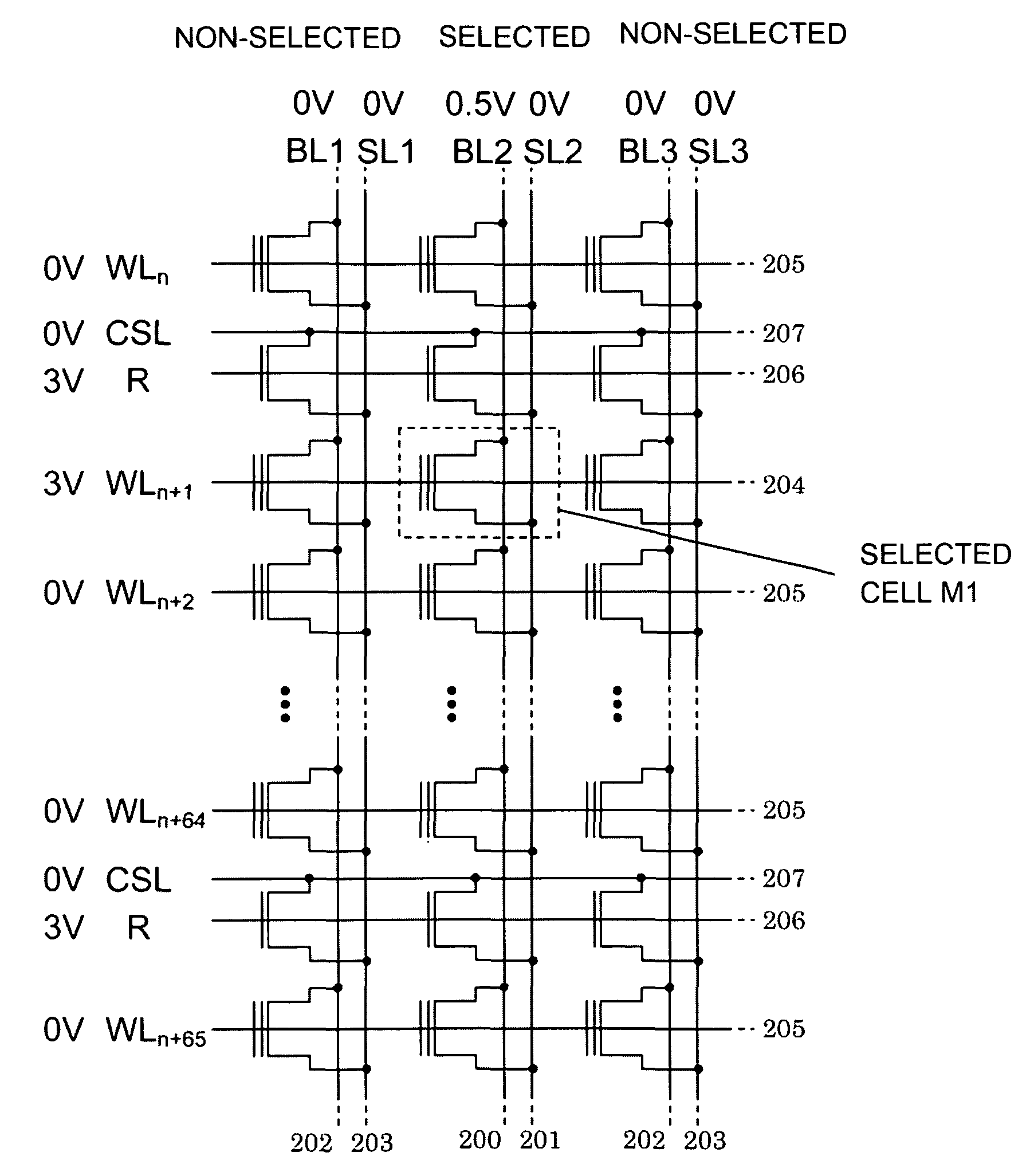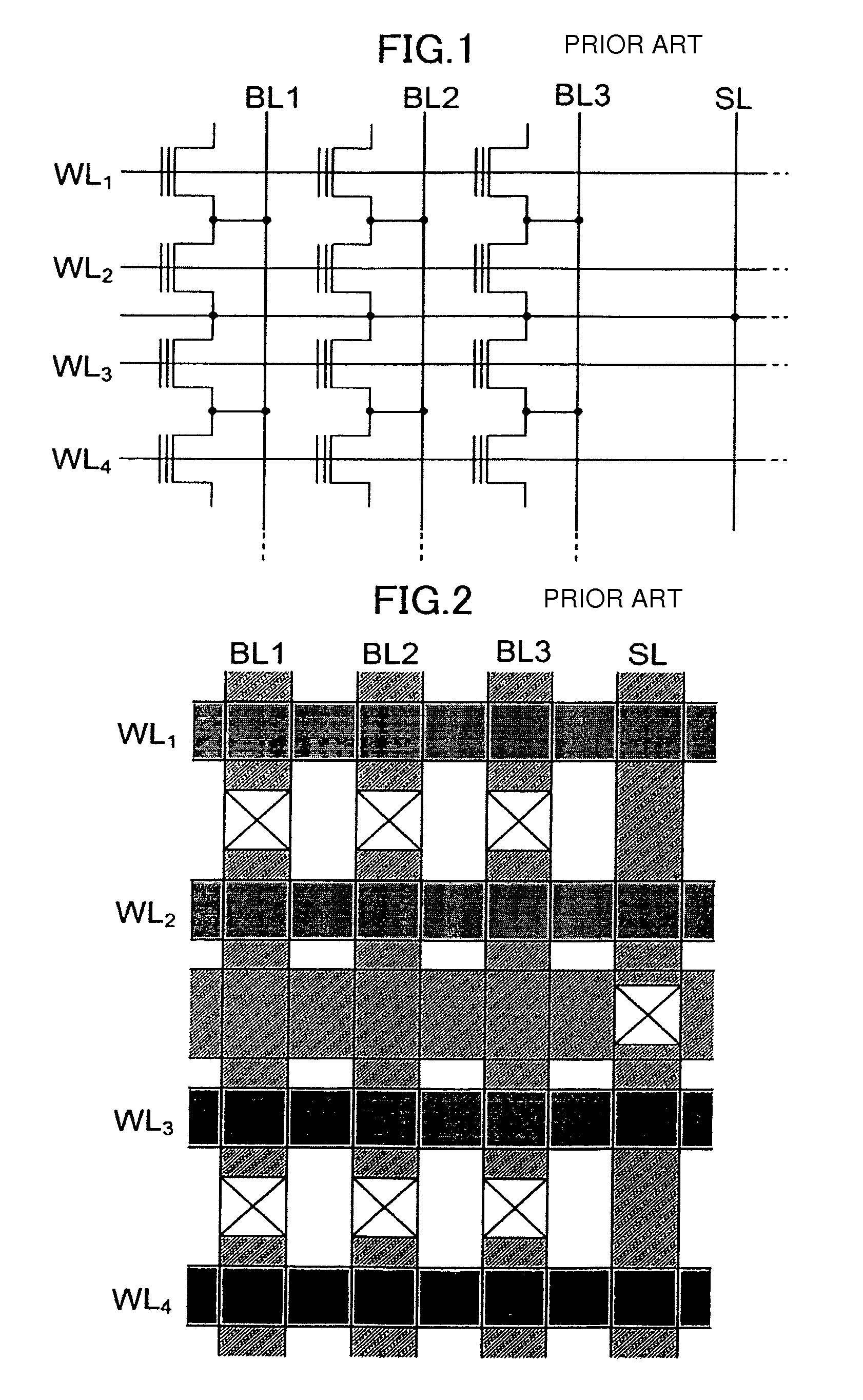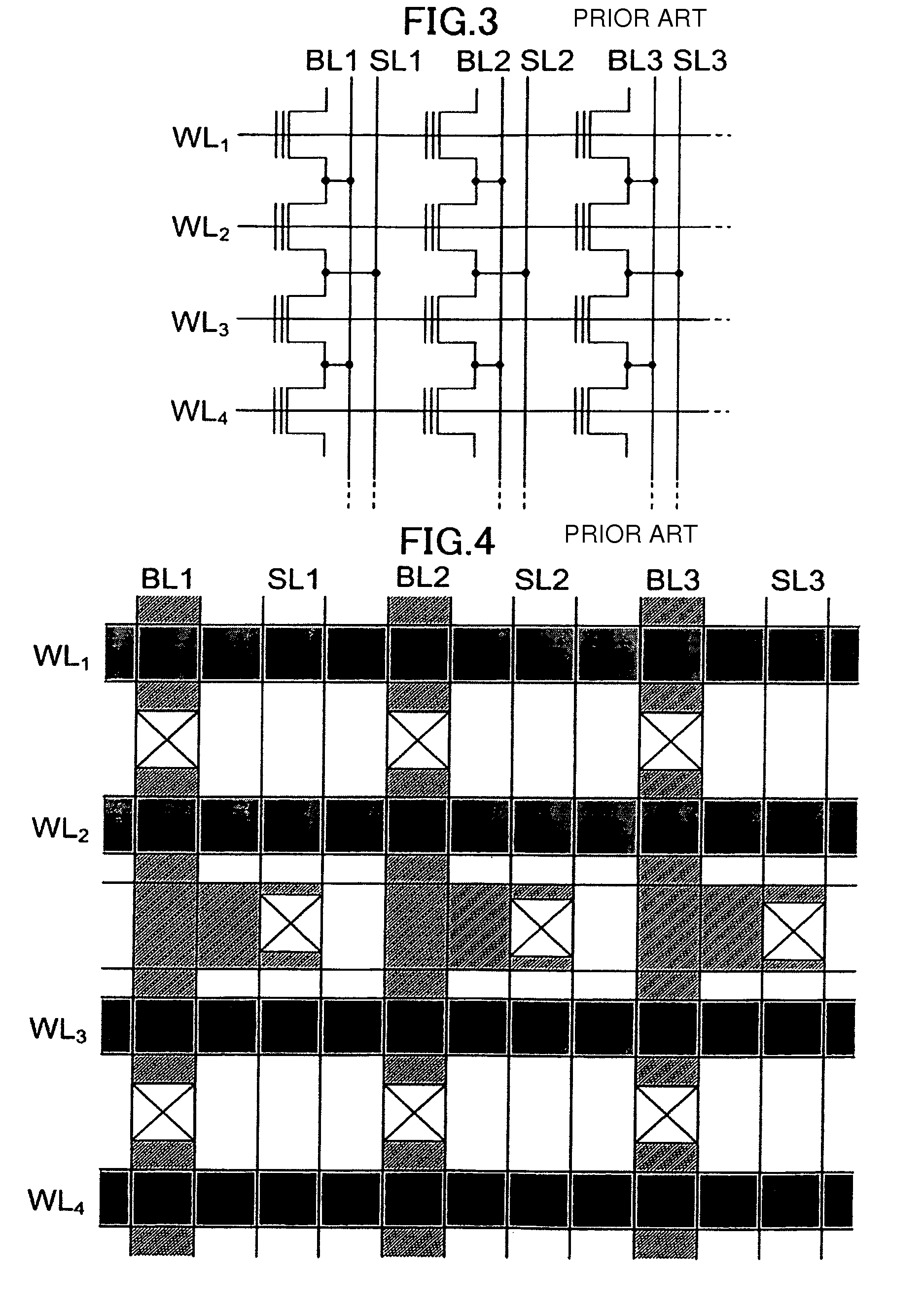Nonvolatile semiconductor memory and method for driving the same
a nonvolatile semiconductor and memory technology, applied in semiconductor devices, digital storage, instruments, etc., can solve the problems of difficult to reduce the gate length of the memory cell, unsuitable for enhancing the speed of writing, and inability to read and write data normally, so as to reduce increase the area of the memory cell. , the effect of increasing the resistance of the source diffusion layer
- Summary
- Abstract
- Description
- Claims
- Application Information
AI Technical Summary
Benefits of technology
Problems solved by technology
Method used
Image
Examples
examples
[0101]Hereinafter, based on an embodiment shown in the drawings, the invention will be described. It is to be understood that the invention is not limited in any way by this embodiment.
[0102]A layout and a sectional structure of a nonvolatile semiconductor memory according to the invention are shown in FIGS. 5, 6, 7, and 8. In this example, on a silicon oxide film 1, source lines 2 and source diffusion layers 3 are formed, island semiconductor layers 4 are formed thereon, drain diffusion layers 5 are formed in the upper parts of the island semiconductor layers 4, charge accumulation layers 6 formed on the channel regions of the side walls sandwiched between the drain diffusion layers 5 and the source diffusion layers 3 via gate insulation films are formed, and control gates are formed on the charge accumulation layers 6, whereby memory cells are formed. Lines which are laid out in rows so as to connect control gates of memory cells with each other are gate lines 7. In addition, at i...
PUM
 Login to View More
Login to View More Abstract
Description
Claims
Application Information
 Login to View More
Login to View More - R&D
- Intellectual Property
- Life Sciences
- Materials
- Tech Scout
- Unparalleled Data Quality
- Higher Quality Content
- 60% Fewer Hallucinations
Browse by: Latest US Patents, China's latest patents, Technical Efficacy Thesaurus, Application Domain, Technology Topic, Popular Technical Reports.
© 2025 PatSnap. All rights reserved.Legal|Privacy policy|Modern Slavery Act Transparency Statement|Sitemap|About US| Contact US: help@patsnap.com



